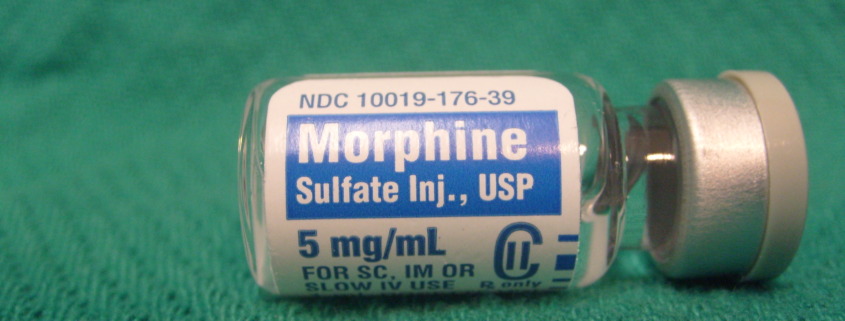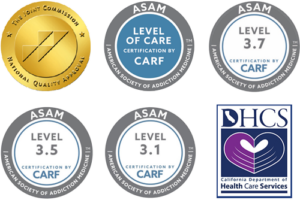How Long Does Morphine Stay in Your System?
If you’ve ever asked yourself the question, “how long does morphine stay in your system?”, this guide will help answer any questions you might have about morphine, other opioid drugs, and addiction treatment options available
Understanding Morphine
In this next section, we will provide details on what morphine is, how it works, and why it is both used therapeutically and recreationally.
What is morphine and its role in pain relief for severe pain?
Morphine is a potent opioid analgesic derived from the opium poppy plant (Papaver somniferum). It is used primarily for the relief of severe pain. Here are some key points about morphine:
- Medical Use: Morphine is used to manage acute and chronic pain, particularly in conditions such as cancer, post-surgical recovery, and severe injury. It works by binding to opioid receptors in the brain and spinal cord, altering the perception of and response to pain. Morphine reduces pain after major surgery or injury, helping to provide comfort during the healing process.
- Forms of Administration: Morphine can be administered in various forms, including oral tablets and oral formulations (solutions), intravenous (IV) injections, intramuscular (IM) injections, and epidural infusions. Extended release formulations may be used to treat moderate pain over long periods, helping to alleviate pain signals. An extended release formulation is designed to release morphine over hours, offering pain relief effects for much longer periods that injections or standard-release morphine can provide.
How morphine binds to opioid receptors for pain relief
How does morphine work for pain control, and how much morphine is needed for pain treatment?
Morphine binds to opioid receptors in the central nervous system (CNS), which are part of a larger group of G-protein-coupled receptors. These receptors are primarily located in the brain and spinal cord and play a key role in modulating pain perception, mood, and other physiological functions. Here’s how morphine binding to these receptors works:
- Opioid Receptors: There are three main types of opioid receptors—mu (μ), delta (δ), and kappa (κ). Morphine has the highest affinity for the mu (μ) receptors, which are primarily responsible for its analgesic (pain-relieving) effects.
- Binding Process: When morphine enters the body, it travels through the bloodstream and crosses the blood-brain barrier to reach the CNS. Once there, it binds to the opioid receptors, particularly the mu receptors, through specific interactions between the morphine molecule and the receptor’s binding site.
- Receptor Activation: The binding of morphine to the mu receptors causes a conformational change in the receptor’s structure. This change activates the receptor and triggers intracellular signaling pathways.
- Signal Transduction: The activation of mu receptors inhibits the release of neurotransmitters like substance P and glutamate, which are involved in the transmission of pain signals.
- Physiological Effects: The overall effect of these actions is a reduction in the perception of pain, as well as other effects such as euphoria, sedation, and respiratory depression.
By binding to and activating opioid receptors, morphine alters the transmission and perception of pain, providing relief to individuals experiencing chronic pain. However, the same mechanisms that provide pain relief also contribute to the drug’s potential for addiction and other side effects.
Taking morphine for pain requires careful analysis of body type, severity of symptoms, and numerous other factors. Medical toxicology professionals have a solid grasp of these factors, helping patients find relief without unnecessary risks.
How Long Does Morphine Stay in Your System? Morphine Half-Life and Metabolism
Now we’re coming to the answer for the question “how long does morphine stay in your system?” Morphine has a short half-life, typically ranging from 2-3.5 hours. The half-life may vary depending on morphine use, the type of morphine taken and individual factors.
Factors that influence morphine’s duration in the system (e.g., age, weight, liver function)
Several factors determine how long morphine stays in the system, including dosage, medical conditions, and other medications. Age, weight, and liver function can also impact the duration of morphine in the system. Frequent users may experience a longer period where morphine can be detected, such as through blood tests, urine tests, or hair/saliva tests.
Morphine Pharmacology
Morphine pharmacology encompasses the drug’s actions, mechanisms, metabolism, and effects on the body. Here’s a detailed overview:
Pharmacodynamics
- Mechanism of Action:
- Receptor Binding: Morphine primarily binds to mu-opioid receptors in the central nervous system (CNS) and, to a lesser extent, to delta and kappa receptors.
- Signal Transduction: Upon binding, morphine activates these receptors, which leads to the inhibition of adenylate cyclase, opening of potassium channels, and closing of calcium channels. This results in decreased neurotransmitter release and reduced neuronal excitability.
- Analgesic Effects: These actions inhibit the transmission of pain signals in the spinal cord and alter pain perception in the brain, providing significant pain relief.
- Physiological Effects:
- Pain Relief: Effective in managing moderate to severe pain.
- Euphoria: Induces feelings of well-being and pleasure.
- Sedation: Causes drowsiness and sleepiness.
- Respiratory Depression: Reduces respiratory rate, which can be life-threatening at high doses.
- Gastrointestinal Effects: Slows gastrointestinal motility, leading to constipation.
- Pupil Constriction: Causes miosis (constricted pupils).
Pharmacokinetics
- Absorption:
- Oral Administration: Morphine is absorbed from the gastrointestinal tract, but its bioavailability is reduced due to first-pass metabolism in the liver. Immediate release morphine may speed the absorption, similar to a morphine injection, while extended release morphine tablets such as the brand name MS Contin (morphine sulfate) are absorbed more slowly. Within minutes of administration, a person may begin feeling light-headed and calm.
- Parenteral Administration: Intravenous, intramuscular, and subcutaneous routes provide higher bioavailability and more rapid onset of action. If a medical professional chooses to prescribe morphine, he or she will take many factors into account to determine the right dosage, formulation, and peak concentration.
- Distribution:
- Plasma Protein Binding: Morphine is moderately bound to plasma proteins.
- Tissue Distribution: It distributes widely in body tissues, including the brain, liver, kidneys, and lungs.
- Metabolism:
- Liver Metabolism: Morphine is metabolized primarily in the liver through conjugation with glucuronic acid to form morphine-3-glucuronide (inactive) and morphine-6-glucuronide (active).
- First-Pass Effect: Oral morphine undergoes significant first-pass metabolism, reducing its bioavailability.
Morphine Detection and Testing
If you’re a morphine user and have applied for a job, you may wonder if drug tests can detect morphine and similar analgesic drugs. The answer is yes, but under certain circumstances:
Blood test for morphine detection
Blood tests can detect morphine in the system for up to three days after the last dose.
Urine test for morphine detection
Urine testing is the most common method for detecting morphine in the system, and it can detect morphine for up to four days after the last dose.
Hair and saliva tests for morphine detection
Hair testing can detect morphine in the system for up to 90 days after the last dose. Saliva testing can detect morphine in the system for up to three days after the last dose.
Hope on the Horizon?
It is important to note that if you are employed and test positive for taking morphine, you cannot lose your job as long as you seek addiction treatment. Drug treatment centers like Journey Hillside Tarzana can help you overcome your addiction, helping break the cycle of drug abuse once and for all.
Prescribed Morphine and Addiction
Although morphine and similar opioids are used by the medical community, so-called “medical” morphine and its derivatives like morphine sulfate or synthetic analgesics are prone to be abused. Prolonged use can lead to severe addiction, potentially costing relationships, personal property, and even one’s freedom.
Risks of addiction when taking prescribed morphine for severe pain
Morphine is a Schedule II narcotic with a high addiction potential. Opioid addiction can develop in as little as a single dose due to the instant high provided by morphine.
There are physical, mental, and behavioral risks associated with morphine addiction. These can include:
- Changes in behavior
- Depression and anxiety
- Increased dependence on the drug
- Cardiovascular problems
- Overdose risks
- Respiratory depression
Symptoms of morphine addiction and withdrawal symptoms
Morphine detoxification occurs when the drug is eliminated from the body (such as when you stop taking morphine), typically starting 12 hours after the last dose. Withdrawal symptoms may include anxiety, insomnia, and muscle and bone pain. Many users report flu-like symptoms and similar durations before the unpleasant withdrawal symptoms subside.
Morphine Abuse and Treatment
This next section dives into the negative consequences of morphine abuse.
Dangers of morphine abuse and addiction
Morphine abuse can lead to physical dependence, tolerance, and addiction. It can also cause respiratory depression, decreased sympathetic tone, and other side effects. Risk-taking behavior, including criminal acts, can result in the user losing his or her freedom and the legal consequences that come with that.
Treatment options for morphine addiction, including detox and rehab programs
Treatment programs, such as detox and rehab, can help individuals overcome morphine addiction. These programs may include medication-assisted treatment, counseling, and behavioral therapy. Journey Hillside Tarzana is a leading treatment center, helping overcome addiction to opioids and many other medications or illicit substances.
Commit to Treatment. Keep Your Job!

Conclusion
Morphine is a potent opioid medication used to treat severe pain, but it carries a high risk of addiction and dependence. Understanding how long morphine stays in the system and its risks can help individuals make informed decisions about their treatment options.





